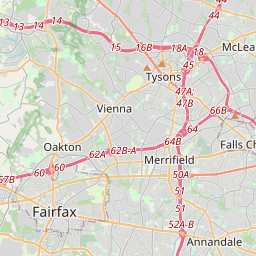Inscription
Civil War to Civil Rights
— Downtown Heritage Trail —
"It's too bad the damn thing is fire proof," General William Tecumseh Sherman, 1887.The nation's only museum dedicated to American achievements in architecture, urban planning, construction, engineering, and design is appropriately housed in one of the most extraordinary structures in the nation's capital.
Constructed between 1882 and 1887, this Italian Renaissance palace was built to house the Pension Bureau, which administered thousands of pensions owed Civil War soldiers and the families of those who died. It was designed by an engineer, Major General Montgomery C. Meigs, who had served the Union cause as Quartermaster General. General Meigs himself lost his son, John Rogers Meigs, in the Civil War. Some have called this building, with its symbolic parade of Union Forces, the Vietnam Veterans Memorial of its day.
Although modeled on Rome's Palazzo Farnese, its provisions for light, air circulation, and fireproofing made it the federal government's first modern office building. Built in red brick rather than the white sandstone and marble of other federal buildings, it was ridiculed by many at the time. "It's too bad the damn thing is fireproof," said General William Tecumseh Sherman.
A 1,200-foot-long terra cotta frieze encircles the entire building, depicting all the Union forces in the Civil War - infantry, cavalry, and artillery troops, and naval, quartermaster, and medical personnel. Inside, massive 75-foot-tall columns, made of brick and finished to look like marble, punctuate a 300-foot-long Great Hall. The Great Hall has been the site of 14 presidential inaugural balls, starting with Grover Cleveland's in 1885, even before the building was completed.
Threatened with demolition in the 1960s, the building was saved by citizen action. It became home to the National Building Museum by an act of Congress in 1980.
[Photo Captions:]
left to right
Major General Montgomery C. Meigs, above, designed and built the Pension Building with a great hall reminiscent of a Renaissance palace. He use 15 ½ million bricks. (Library of Congress. Library of Congress. Washingtoniana Division, D.C. Public Library.)
left
The Great Hall decorated for the inaugural ball of President William McKinley in 1901. (Historical Society of Washington, D.C.)
below
A portion of the terra cotta frieze which encircles the building honors the Union forces in the Civil War. (National Building Museum.)
Details
| HM Number | HMWT5 |
|---|---|
| Series | This marker is part of the Civil War to Civil Rights series, and the National Historic Landmarks series. |
| Tags | |
| Marker Number | e.3 |
| Placed By | Cultural Tourism DC |
| Marker Condition | No reports yet |
| Date Added | Wednesday, September 24th, 2014 at 5:49am PDT -07:00 |
Pictures
Locationbig map






| UTM (WGS84 Datum) | 18S E 324980 N 4307312 |
|---|---|
| Decimal Degrees | 38.89726667, -77.01820000 |
| Degrees and Decimal Minutes | N 38° 53.836', W 77° 1.092' |
| Degrees, Minutes and Seconds | 38° 53' 50.16" N, 77° 1' 5.52" W |
| Driving Directions | Google Maps |
| Area Code(s) | 202, 703 |
| Closest Postal Address | At or near 450-494 F St NW, Washington DC 20001, US |
| Alternative Maps | Google Maps, MapQuest, Bing Maps, Yahoo Maps, MSR Maps, OpenCycleMap, MyTopo Maps, OpenStreetMap |
Is this marker missing? Are the coordinates wrong? Do you have additional information that you would like to share with us? If so, check in.
Nearby Markersshow on map
Maintenance Issues
- What historical period does the marker represent?
- What historical place does the marker represent?
- What type of marker is it?
- What class is the marker?
- What style is the marker?
- What year was the marker erected?
- This marker needs at least one picture.
- Can this marker be seen from the road?
- Is the marker in the median?

Comments 0 comments